- Home
- Tom Clancy
SSN Page 18
SSN Read online
Page 18
Which was fine with Mack. This was a submarine war; it was Cheyenne’s submarine war. He did appreciate, however, that Arco had brought a replacement screw for Cheyenne. She didn’t need it yet, but there was always the outside chance that Chinese torpedo shrapnel would get close enough to cause damage to the screw. The “singing” screw that could develop from that would limit Cheyenne’s speed, and that was worse than a SUBSAFE depth restriction to one-half test depth. Singing screws were a condition that could not be tolerated even in peacetime.
Arco also had brought the “ship’s key,” the huge wrench needed to remove and replace the screw’s hub nut.
* * *
The following morning, McKee arrived in Subic Bay under the cover of darkness. She didn’t moor at the sea wall, but instead moored outboard of Arco at the SRF (ship repair facility) just down the street from the old Naval Forces headquarters building. Mack knew that the captain of McKee would consider moving his ship after Cheyenne’s departure, and after his men were able to assess the safety of the previously normal berth for large ships like McKee. Those berths had been unattended for nearly five years, and he would want to be sure of the sea wall’s status, including the mooring bollards, before he felt comfortable enough to moor there for the duration of the war.
There was another good reason for that choice. As Mack knew, the sea wall was located across the relatively narrow channel from the aircraft carrier mooring at Cubi Point, and tending submarines there had never been done before. In the old days, when the United States was maintaining and operating this base, submarine upkeeps always had been conducted within the SRF gates both for security purposes and because it was near the SRF shops and weapons-storage areas.
At daylight, McKee slacked its mooring lines to Arco for the flooding down of the drydock and the “dead stick” move of Cheyenne to outboard of McKee. For safety reasons, the two captains agreed not to load weapons while Cheyenne was still inside the drydock.
When the drydock was flooded and seawater systems were once again flooded and vented of any entrapped air, Cheyenne received the word “prepare to snorkel” and passed it along, internally, over the 1MC. With no current to contend with, this move went smoothly and safely. Cheyenne’s diesel generator provided power to the emergency propulsion motor (EPM) and to the ship’s vital electrical loads, which remained energized during “rig ship for reduced electrical power.” Had this been done in San Diego, without Cheyenne’s reactor power and steam in the engineering spaces, it would have required at least one tug, and maybe two if Cheyenne had needed to make the move at other than slack tide.
When Cheyenne was positioned properly, the combat systems officer, engineer officer, and their other division officers remained on board Cheyenne to take care of the weapons loading and reactor start-up preparations. Captain Mackey, along with his executive officer, operations officer, and navigator, proceeded to McKee’s war room for their pre-underway briefing.
There was a new face at this meeting: the CSS 11 commodore was present — which, Mack knew, could mean major changes, or it could mean nothing. Either way, he’d know soon enough.
Once the formalities were out of the way, the briefing officer again took control of the meeting. He informed Mack and the other officers of Cheyenne that, with McKee no longer requiring air protection from the Carrier Battle Group, CINCPACFLT had decided to move Independence and his other surface forces to an area west of the Spratly Islands. USCINCPAC, with JCS approval, had concurred. Which meant that there would be a change in the location of Cheyenne’s next patrol.
Mack’s earlier orders had been to patrol south of the islands, but those orders were no longer valid. His new orders were for Cheyenne to transit to a patrol area located about four hundred nautical miles to the north — deep waters with which Cheyenne was now familiar. However, the briefing officer went on, if the inbound Akulas were detected heading for the Paracels, Cheyenne was expected to cut them off before the three Akulas from the North Fleet could resupply.
Captain Mackey, his executive officer, and Cheyenne’s navigator all knew that this would introduce additional hazards to their mission. At the very least, they would have to contend with the neutral shipping and the oil rigs situated off the northern slopes of the Macclesfield Bank. Cheyenne had managed to avoid those problems during the last patrol by staying south of the banks, but that was no longer an option.
After relaying that information, the briefing officer brought up some older intel, emphasizing the information contained in Cheyenne’s latest message traffic. In particular, he reminded them that the Akulas were not manned by inexperienced Chinese crews, but had come complete with their normal Russian crews. experienced with their own submarines. And, the briefing officer continued, since the protests from Washington were falling on deaf ears in Russia, Cheyenne was being tasked as an instrument of diplomacy: sink the Akulas and Russia would probably stop supplying assets, ships, and men to the Chinese.
Mack spoke up at that. With the dwindling supply of torpedoes aboard McKee, the tender was practically rationing them. For this loadout, Cheyenne was receiving only twenty Mk 48s, and while he understood the rationale for it, that amount was far short of a full complement, and not enough to go against all seven Akulas.
CTF 74 agreed, but he did not authorize more torpedoes for Cheyenne. Instead, he said that if she sank four of the seven Akulas, they would be successful. Losing four new submarines and nearly four hundred of Russia’s best submariners, CTF 74 said, might just fulfill Washington’s diplomatic needs nicely.
Mack was disappointed. He’d been hoping for a more complete load-out. After all, the Seabees were already at work. Resurfacing the runway at Cubi Point would solve the weapons-reload problem and remove the need for rationing. In the long run, of course, it would do more than that. In the long run, it would solve the whole base resurrection problem.
Before the briefing was terminated, the executive officer asked about “RuLings” (Russian linguists). The briefing officer replied that the NSG (naval security group) in Yokosuka had provided two RuLings to supplement the “ChiLings” (Chinese linguists) currently with the NSG detachment aboard Cheyenne. They were brought to Subic Bay by Arco. With “hot bunking” the rule for 688s, they were prepared to hot-bunk with their counterparts.
As the briefing came to an end, the executive officer’s moment arrived. He was preparing to follow Mack and the other officers back to Cheyenne when the CSS 11 commodore stopped him and told him that it was time for his qual for command board.
This was even better than the executive officer hoped. He was prepared, and he felt he was qualified, but he hadn’t been looking forward to a long and difficult board. And with Cheyenne already stationing the maneuvering watch in preparation for getting under way, there simply wasn’t time for an extended board.
The board turned out to be even shorter than he’d dreamed. It consisted of the commodore relaying a message from the chief of naval personnel designating him “qualified for command.” The executive officer hadn’t known it, but Cheyenne’s successes and the respect that Washington had for her captain had allowed the chain of command to take a few shortcuts in protocol. The commodore could have placed this on the earlier broadcast, but he hadn’t because he had wanted to surprise the executive officer.
This didn’t mean that the executive officer was ready to leave Cheyenne for a command of his own. They needed to finish this war with China first so that he could start the command schooling route — which was one protocol that would not be circumvented.
* * *
Cheyenne got under way in a rainsquall. The weather had little effect on the SSN other than limiting visibility during her surface transit to the dive point west of the eighty-five-degree water of Subic Bay. Cheyenne’s navigation radar had been tweaked and peaked by the navigation ETs in order to handle this event — providing that no Chinese warships were around to detect the radar’s emissions.
Mindful of the danger, Mack decide
d to limit the power on the navigation radar, keeping it to only what was needed to detect the nearby landmasses. That meant that Cheyenne would have to rely on ESM to detect any incoming surface ship radars. Mack was counting on the fact that Subic Bay had become a ghost town, with almost no traffic in and out.
Subic Bay, it seemed, was about the only place in the area that had little traffic. During dinner that night, as his officers ate quickly, Mack said to them, “We once again have our work cut out for us. With that many quiet Akulas staring us in the face, we’ll need to be innovative in our attacks. We may have to learn how to flush them out. And we won’t have much chance to rest before it’s time to man battle stations.”
He was right. Sonar had already reported weak tonals from an Akula to the north. As Mack arrived at the conn after dinner, the section fire control tracking party announced that the initial rough range had been established as 75,000 yards. Mack acknowledged the report and ordered the OOD to man battle stations torpedo.
There was still no sign of the rest of the Russian submarines. Just the one set of low frequency tonals, most likely from an Akula — one with sound shorts to its turbine generator.
The captain passed the order for the torpedo room to “Make tubes one and two ready in all respects, including opening the outer doors.” It was Cheyenne’s routine to make the tubes ready as early as possible and as far from the enemy submarine as possible, but it was even more important when facing the quiet Akulas.
The Akula class carried its own towed arrays. Intel had not been able to learn much about its sensor capability, so Mack had to make his own assumptions about it. He had already decided to play it safe and assume that it was equivalent to at least a TB-16 array and a BQQ-5A sonar capability, the first of the U.S. submarine force digital sonar systems.
The acknowledgment of his order came quickly over the sound powered phone. “Make tubes one and two ready in all respects, including opening the outer doors, fire control, torpedo room, aye.”
Confirmation followed moments later, and the executive officer informed the captain that the ordered evolution with the torpedo tubes had been completed. “Captain, tubes one and two are ready in all respects. Both outer doors are open.”
“Very well, fire control,” Mack replied.
Cheyenne had faced a number of foes already, and in some of the encounters she’d gotten lucky. This wasn’t one of those times.
The Akula was tracking to the west, which put its towed array in a more optimal position for detection than Cheyenne, whose array was trained optimally only when they zigged and zagged while approaching the Akula. Cheyenne was closing the range, intending to intercept with a fire-control solution before the Akula could reach the banks, where it would be acoustically shielded. Mack knew that the other Akulas had to be out there as well, but Cheyenne could not detect them. They remained silent, deadly holes in the ocean.
The Akula continued drawing left as Cheyenne closed. It was still showing up only as sonar tonals, with no contact from the spherical or conformal arrays. But that was enough.
The TB-23 inputs to the three BSY-1 computer consoles, augmented by Cheyenne’s course changes, made the solution possible for the fire-control party. When the BSY-1 operator and the fire-control coordinator were satisfied with the TMA (target-motion analysis) solution on Master 74, the Russian Akula II SSN, the captain ordered, “Firing point procedures, Master 74.”
The combat systems officer reported the target course as 270, speed eight, and range 22,500 yards.
“Sonar, conn, stand by,” Mack ordered.
“Conn, sonar, standing by.”
“Match sonar bearings and shoot, tubes one and two.”
“Match sonar bearings and shoot, tubes one and two, aye.”
There was a brief pause and then the combat systems officer said, “Tubes one and two fired electrically.”
“Conn, sonar, units from tubes one and two running hot, straight, and normal,” the sonar supervisor reported as the two torpedoes executed their wire-clearance maneuvers and accelerated to slow speed for the long inbound run.
“Sonar, conn, aye,” Mack replied.
At dinner earlier, he had told his officers they might have to be innovative against the Akulas. He hadn’t forgotten. “Take charge and steer the weapons,” he said. “Unit one off course thirty degrees to the right and unit two off course thirty degrees to the left.”
The fire-control party immediately knew what Mack had in mind, and they loved it. When the torpedoes were close enough for passive acquisition, they would be steered back in the opposite direction. Upon acquisition, the incoming torpedoes would make it appear that they had come from two separate U.S. submarines, lurking to the west and the east, instead of only Cheyenne closing from the south.
“Time to turn the units?” Mack asked.
“Twenty-three minutes, forty-five seconds, Captain,” the combat systems officer replied.
The torpedoes were turned on cue, bearing down on the Akula. To increase their chances, one torpedo led the target while the other lagged slightly behind.
“Time to acquisition?” Mack asked the combat systems officer.
“Nine minutes, Captain.”
That was his best guess, and it was wrong. Only five minutes had elapsed when the combat systems officer announced, “Unit two has acquired.” A moment later he added, “Unit one has acquired, but it’s not Master 74.”
That could mean only one thing: the torpedoes had each detected a different Akula — the one they had first targeted and a bonus. Mack didn’t have time to celebrate. “Cut the wires, shut the outer doors, and reload tubes one and two,” he ordered.
The silent ocean didn’t stay silent for long. “Conn, sonar,” the sonar supervisor said with tension in his voice, “we have two torpedoes in the water, bearings 350 and 010.”
Mack smiled to himself as he heard the bearings. The Russian CO had launched snapshots at the bearings of the incoming torpedoes, but Mack’s ploy had worked. The Russian torpedoes were not headed for Cheyenne.
“Conn, sonar, the hornets’ nest is emptying.” Six new contacts on the spherical array as well as Master 74 indicated that the Akulas were running for it. But they were also turning to the south to avoid the easterly and westerly bearings of the invading Mk 48s. Spherical-array depression-angle changes indicated they were also coming down to Cheyenne’s depth zone.
“All ahead flank. Do not cavitate. Make your depth one thousand feet,” Mack ordered.
Cheyenne was already deep beneath the second layer, so it took less than a minute for her to reach flank speed, on course due north, and at one thousand feet. The nearly zero bearing rate she presented to the Russians meant that Cheyenne would give them a taste — if they detected her — of the Chinese kamikaze runs weeks earlier. But Mack didn’t think they’d detect her, even at flank speed and deep. The range was too great, and the Akulas were running too fast for a TB-16 and BQQ-5-equivalent sensor suited to detect any but the closest targets.
“Conn, sonar, two explosions, bearings 359 and 002, range hard to discern, estimate 18 to 20,000 yards.”
Mack picked up the OOD’s JA sound-powered phone and spoke to the officers and men of Cheyenne through the compartment phone talkers: “This is the captain. Gentlemen, Cheyenne has won again. Excellent work. We still have a number of Russian SSNs out there, and they aren’t too happy.” Hanging up the phone, he turned to the chief of the watch and said, “Chief of the watch, stand down but do not secure from battle stations.”
Even as he gave the order, though, Mack knew that the stand-down from the tension could easily be short lived, especially if the remaining Akulas continued heading to the south.
“Conn, sonar, we have multiple underwater telephone contacts bearing 355 to 005.” The Akulas had slowed and were conducting range checks with each other. This was exactly why they’d brought the RuLings aboard, to help with range inputs to the BSY-1 by translating the ranges being passed between the remainin
g five Akulas.
Captain Mackey ordered the towed array housed. They wouldn’t need it during the short-range tracking currently in progress.
When that order had been acknowledged and confirmed, he turned his attention on the remaining Akulas. “Torpedo room, fire control, make tubes three and four ready in all respects, including opening the outer doors.”
“Make tubes three and four ready in all respects, including opening the outer doors, fire control, torpedo room, aye.”
Even in the aftermath of their latest kills, the officers and crew of Cheyenne maintained their crisp, efficient, and professional performance.
As soon as the torpedo room reported completing the ordered evolution with the torpedo tubes, the executive officer relayed the information to Captain Mackey. “Captain, tubes three and four are ready in all respects. Both outer doors are open.”
“Very well, fire control,” he replied.
Only two of the five Akulas were being tracked, but Cheyenne now had contact on all her sonar arrays. When the BSY-1 operator and the fire-control coordinator were satisfied with the TMA solution on Masters 76 and 80, Mack gave the command, “Firing point procedures, Master 76, tube three and Master 80, tube four.”
As before, the combat systems officer at the BSY-1 reported the course, speed, and range of the two targets.
“Sonar, conn, stand by.”
“Conn, sonar, standing by.”
“Match sonar bearings and shoot, tubes three and four.”
“Match sonar bearings and shoot, tubes three and four, aye.”
“Tubes three and four fired electrically,” reported the combat systems officer.
“Conn, sonar, units from tubes three and four running hot, straight, and normal,” the sonar supervisor reported as the two torpedoes executed their wire-clearance maneuvers.
Unlike the torpedoes Cheyenne had fired at the first Akula, these were set to run at slow speed until acquisition. Once they had acquired, they would increase their speed and head up from their deep search depth. When they breached the layer, the torpedoes would pitch up and complete their acceleration to attack speed.

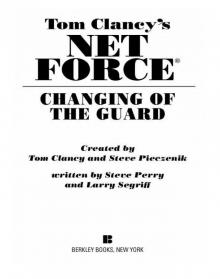 Changing of the Guard
Changing of the Guard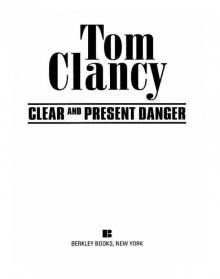 Clear and Present Danger
Clear and Present Danger Hounds of Rome
Hounds of Rome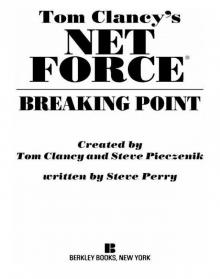 Breaking Point
Breaking Point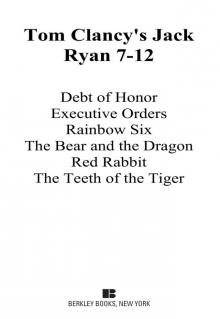 Tom Clancy's Jack Ryan Books 7-12
Tom Clancy's Jack Ryan Books 7-12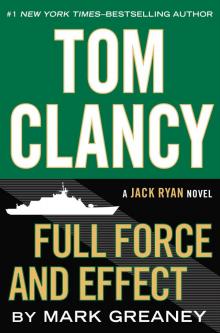 Full Force and Effect
Full Force and Effect The Archimedes Effect
The Archimedes Effect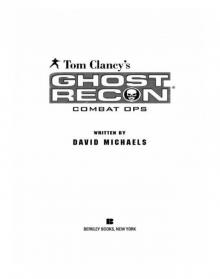 Combat Ops
Combat Ops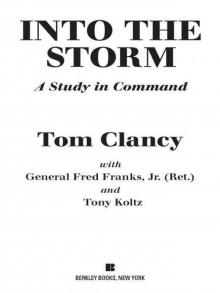 Into the Storm: On the Ground in Iraq
Into the Storm: On the Ground in Iraq Under Fire
Under Fire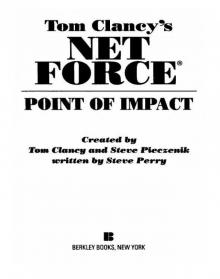 Point of Impact
Point of Impact Red Rabbit
Red Rabbit Rainbow Six
Rainbow Six The Hunt for Red October
The Hunt for Red October The Teeth of the Tiger
The Teeth of the Tiger Conviction (2009)
Conviction (2009)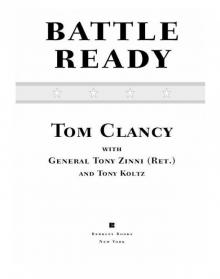 Battle Ready
Battle Ready Patriot Games
Patriot Games The Sum of All Fears
The Sum of All Fears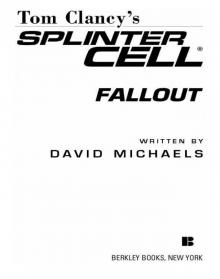 Fallout (2007)
Fallout (2007) Red Storm Rising
Red Storm Rising The Cardinal of the Kremlin
The Cardinal of the Kremlin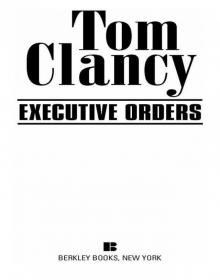 Executive Orders
Executive Orders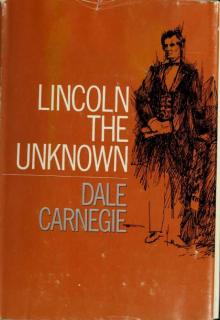 Lincoln, the unknown
Lincoln, the unknown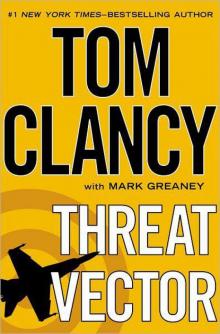 Threat Vector
Threat Vector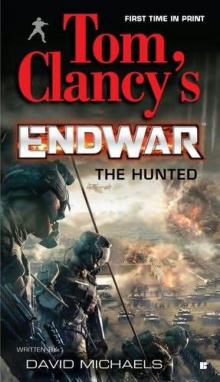 The Hunted
The Hunted Shadow Warriors: Inside the Special Forces
Shadow Warriors: Inside the Special Forces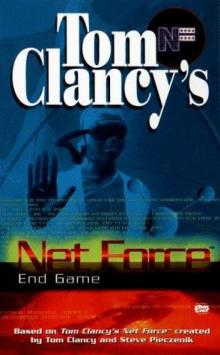 End Game
End Game Special Forces: A Guided Tour of U.S. Army Special Forces
Special Forces: A Guided Tour of U.S. Army Special Forces Locked On
Locked On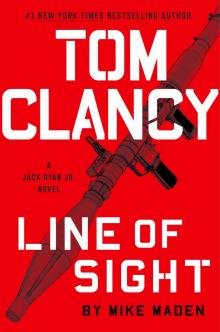 Line of Sight
Line of Sight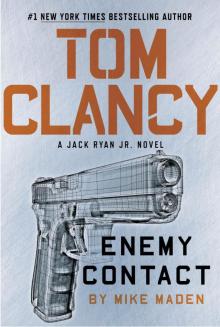 Tom Clancy Enemy Contact - Mike Maden
Tom Clancy Enemy Contact - Mike Maden Fighter Wing: A Guided Tour of an Air Force Combat Wing
Fighter Wing: A Guided Tour of an Air Force Combat Wing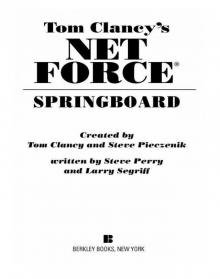 Springboard
Springboard Line of Sight - Mike Maden
Line of Sight - Mike Maden EndWar
EndWar Dead or Alive
Dead or Alive Tom Clancy Support and Defend
Tom Clancy Support and Defend Checkmate
Checkmate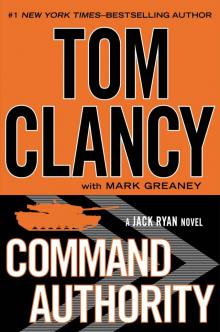 Command Authority
Command Authority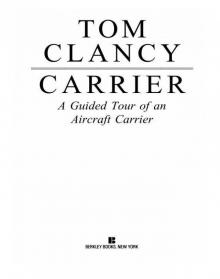 Carrier: A Guided Tour of an Aircraft Carrier
Carrier: A Guided Tour of an Aircraft Carrier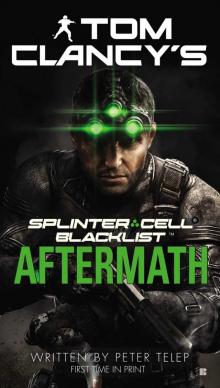 Blacklist Aftermath
Blacklist Aftermath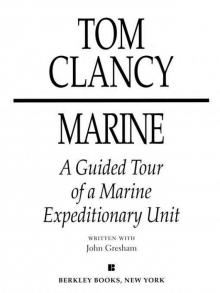 Marine: A Guided Tour of a Marine Expeditionary Unit
Marine: A Guided Tour of a Marine Expeditionary Unit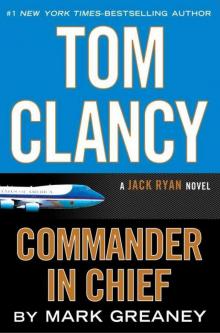 Commander-In-Chief
Commander-In-Chief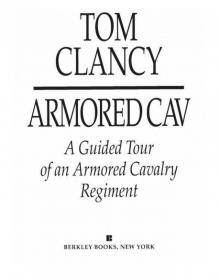 Armored Cav: A Guided Tour of an Armored Cavalry Regiment
Armored Cav: A Guided Tour of an Armored Cavalry Regiment Tom Clancy's Jack Ryan Books 1-6
Tom Clancy's Jack Ryan Books 1-6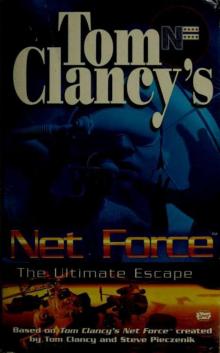 The Ultimate Escape
The Ultimate Escape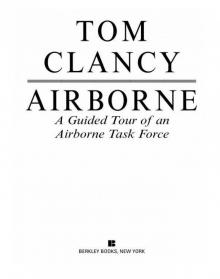 Airborne: A Guided Tour of an Airborne Task Force
Airborne: A Guided Tour of an Airborne Task Force Debt of Honor
Debt of Honor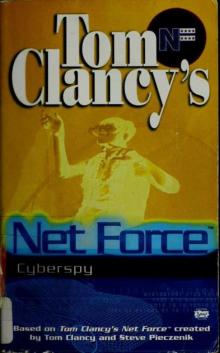 Cyberspy
Cyberspy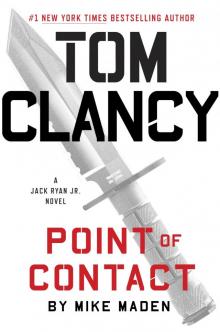 Point of Contact
Point of Contact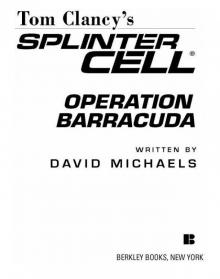 Operation Barracuda (2005)
Operation Barracuda (2005)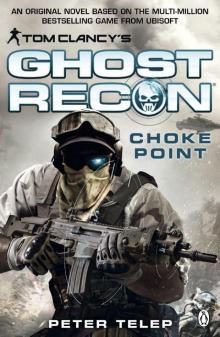 Choke Point
Choke Point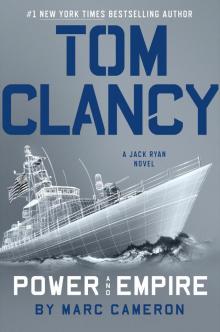 Power and Empire
Power and Empire Every Man a Tiger: The Gulf War Air Campaign
Every Man a Tiger: The Gulf War Air Campaign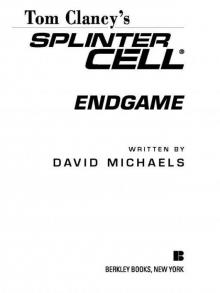 Endgame (1998)
Endgame (1998)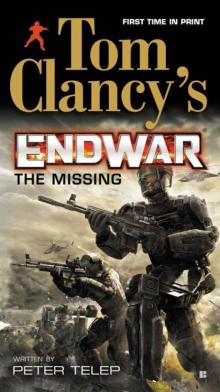 EndWar: The Missing
EndWar: The Missing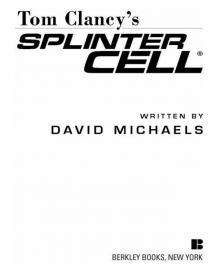 Splinter Cell (2004)
Splinter Cell (2004) The Great Race
The Great Race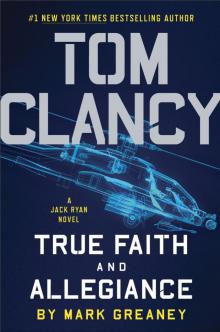 True Faith and Allegiance
True Faith and Allegiance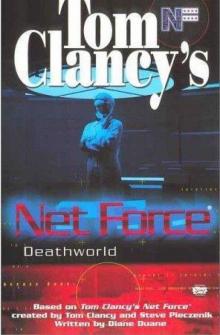 Deathworld
Deathworld Ghost Recon (2008)
Ghost Recon (2008)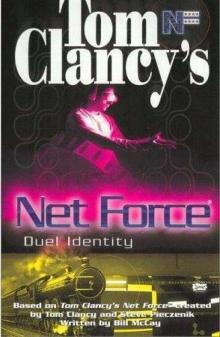 Duel Identity
Duel Identity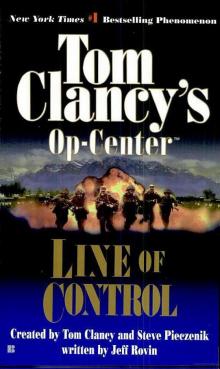 Line of Control o-8
Line of Control o-8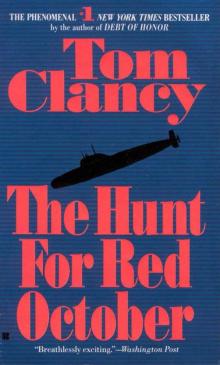 The Hunt for Red October jr-3
The Hunt for Red October jr-3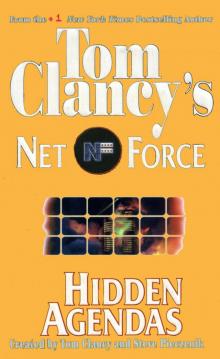 Hidden Agendas nf-2
Hidden Agendas nf-2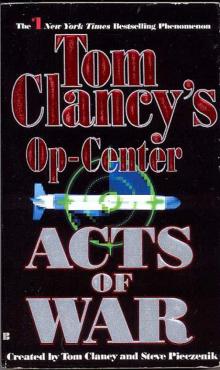 Acts of War oc-4
Acts of War oc-4 Ruthless.Com pp-2
Ruthless.Com pp-2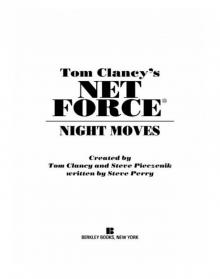 Night Moves
Night Moves The Hounds of Rome - Mystery of a Fugitive Priest
The Hounds of Rome - Mystery of a Fugitive Priest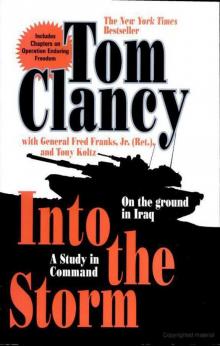 Into the Storm: On the Ground in Iraq sic-1
Into the Storm: On the Ground in Iraq sic-1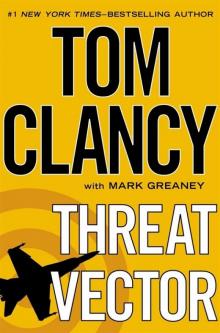 Threat Vector jrj-4
Threat Vector jrj-4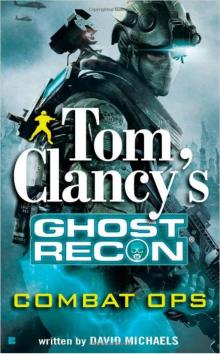 Combat Ops gr-2
Combat Ops gr-2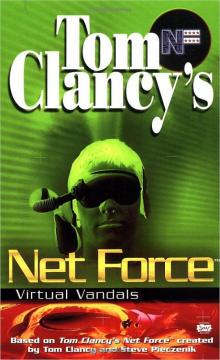 Virtual Vandals nfe-1
Virtual Vandals nfe-1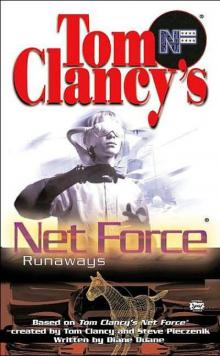 Runaways nfe-16
Runaways nfe-16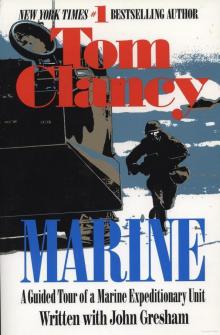 Marine: A Guided Tour of a Marine Expeditionary Unit tcml-4
Marine: A Guided Tour of a Marine Expeditionary Unit tcml-4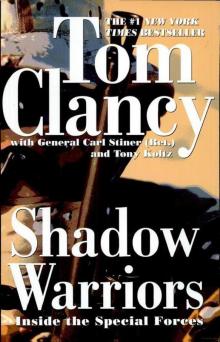 Shadow Warriors: Inside the Special Forces sic-3
Shadow Warriors: Inside the Special Forces sic-3 Jack Ryan Books 1-6
Jack Ryan Books 1-6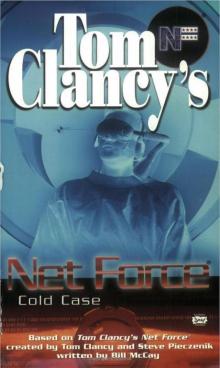 Cold Case nfe-15
Cold Case nfe-15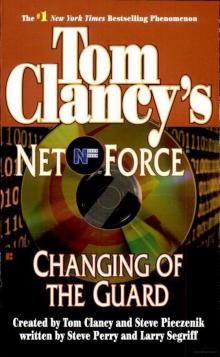 Changing of the Guard nf-8
Changing of the Guard nf-8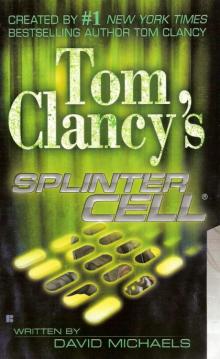 Splinter Cell sc-1
Splinter Cell sc-1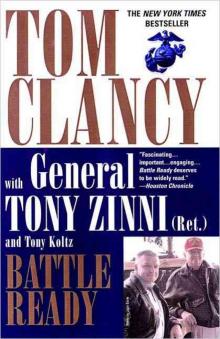 Battle Ready sic-4
Battle Ready sic-4 The Bear and the Dragon jrao-11
The Bear and the Dragon jrao-11 Fighter Wing: A Guided Tour of an Air Force Combat Wing tcml-3
Fighter Wing: A Guided Tour of an Air Force Combat Wing tcml-3 Patriot Games jr-1
Patriot Games jr-1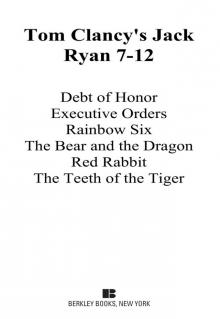 Jack Ryan Books 7-12
Jack Ryan Books 7-12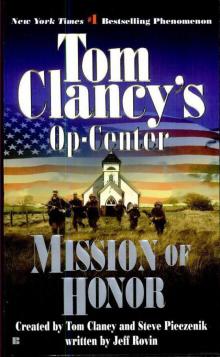 Mission of Honor o-9
Mission of Honor o-9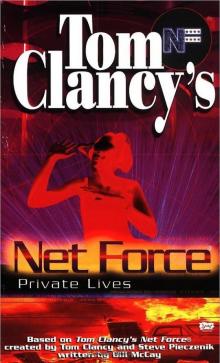 Private Lives nfe-9
Private Lives nfe-9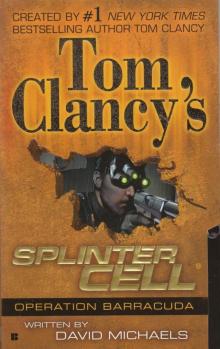 Operation Barracuda sc-2
Operation Barracuda sc-2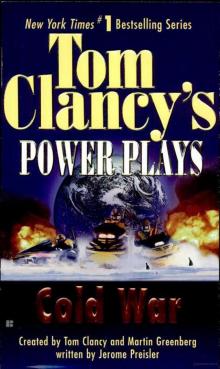 Cold War pp-5
Cold War pp-5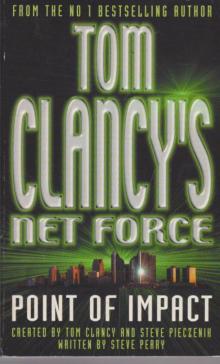 Point of Impact nf-5
Point of Impact nf-5 Red Rabbit jr-9
Red Rabbit jr-9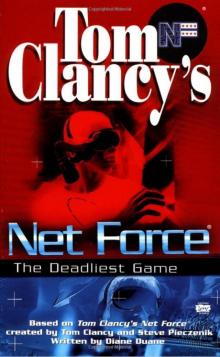 The Deadliest Game nfe-2
The Deadliest Game nfe-2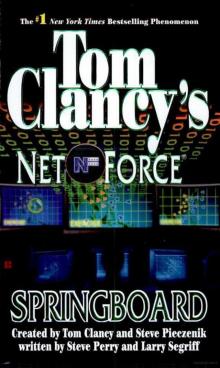 Springboard nf-9
Springboard nf-9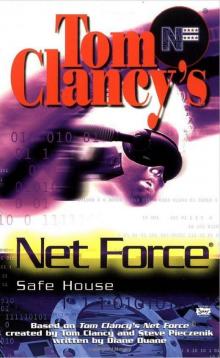 Safe House nfe-10
Safe House nfe-10 EndWar e-1
EndWar e-1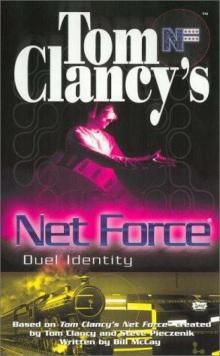 Duel Identity nfe-12
Duel Identity nfe-12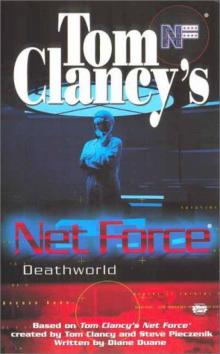 Deathworld nfe-13
Deathworld nfe-13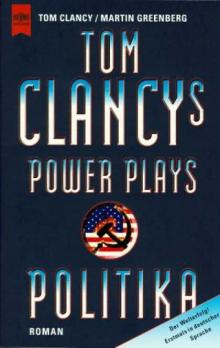 Politika pp-1
Politika pp-1 Rainbow Six jr-9
Rainbow Six jr-9 Tom Clancy's Power Plays 1 - 4
Tom Clancy's Power Plays 1 - 4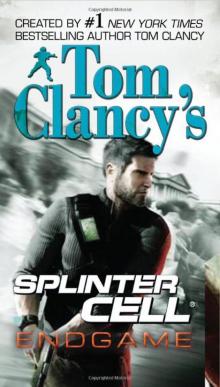 Endgame sc-6
Endgame sc-6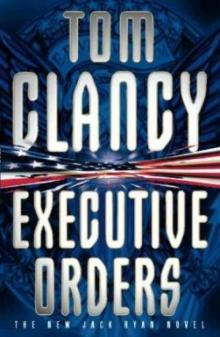 Executive Orders jr-7
Executive Orders jr-7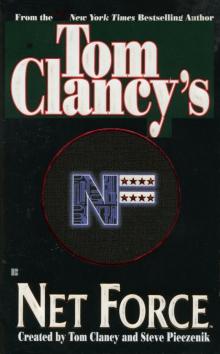 Net Force nf-1
Net Force nf-1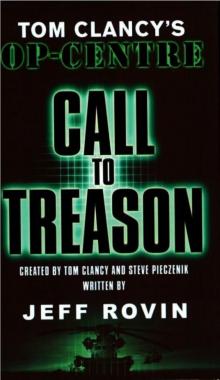 Call to Treason o-11
Call to Treason o-11 Locked On jrj-3
Locked On jrj-3 Against All Enemies
Against All Enemies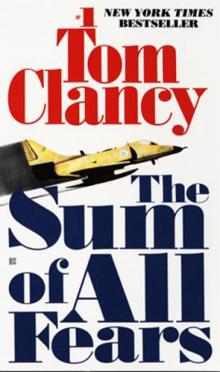 The Sum of All Fears jr-7
The Sum of All Fears jr-7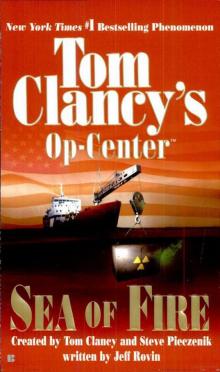 Sea of Fire o-10
Sea of Fire o-10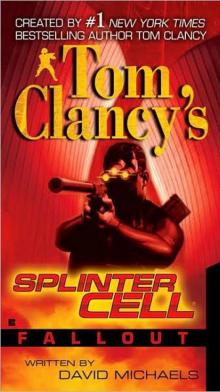 Fallout sc-4
Fallout sc-4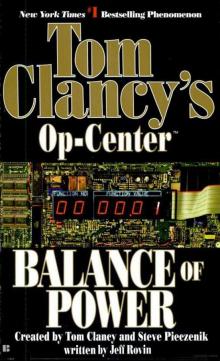 Balance of Power o-5
Balance of Power o-5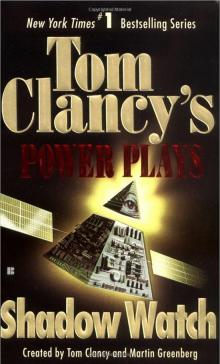 Shadow Watch pp-3
Shadow Watch pp-3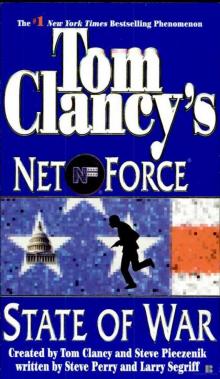 State of War nf-7
State of War nf-7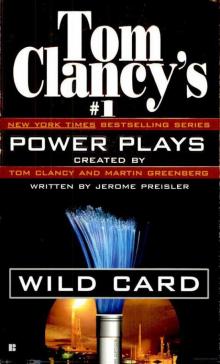 Wild Card pp-8
Wild Card pp-8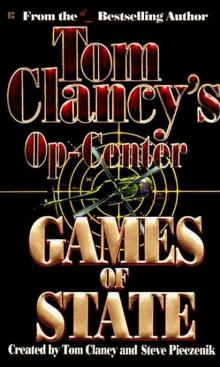 Games of State o-3
Games of State o-3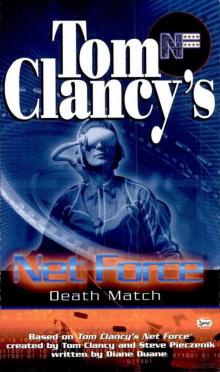 Death Match nfe-18
Death Match nfe-18 Against All Enemies mm-1
Against All Enemies mm-1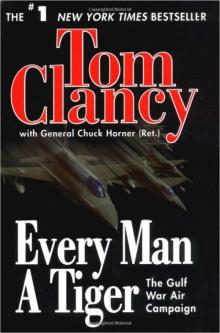 Every Man a Tiger: The Gulf War Air Campaign sic-2
Every Man a Tiger: The Gulf War Air Campaign sic-2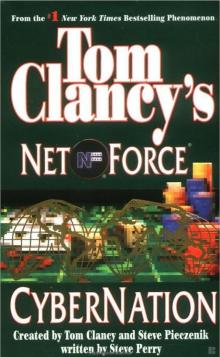 Cybernation nf-6
Cybernation nf-6 Support and Defend
Support and Defend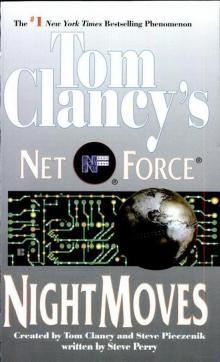 Night Moves nf-3
Night Moves nf-3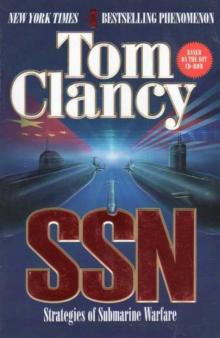 SSN
SSN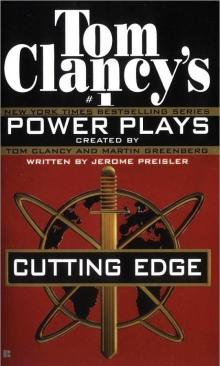 Cutting Edge pp-6
Cutting Edge pp-6 The Cardinal of the Kremlin jrao-5
The Cardinal of the Kremlin jrao-5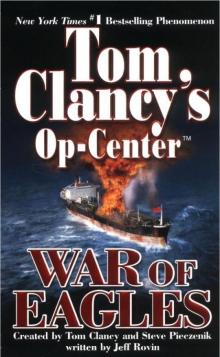 War of Eagles o-12
War of Eagles o-12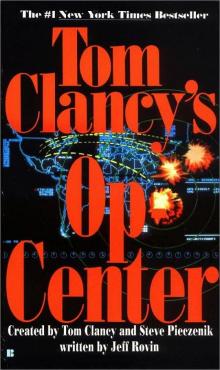 Op-Center o-1
Op-Center o-1 Mirror Image o-2
Mirror Image o-2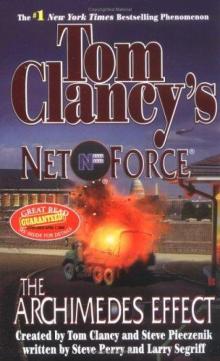 The Archimedes Effect nf-10
The Archimedes Effect nf-10 Teeth of the Tiger jrj-1
Teeth of the Tiger jrj-1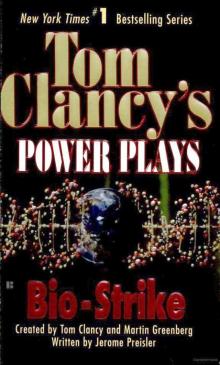 Bio-Strike pp-4
Bio-Strike pp-4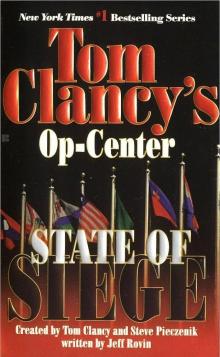 State of Siege o-6
State of Siege o-6 Debt of Honor jr-6
Debt of Honor jr-6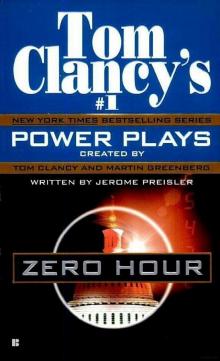 Zero Hour pp-7
Zero Hour pp-7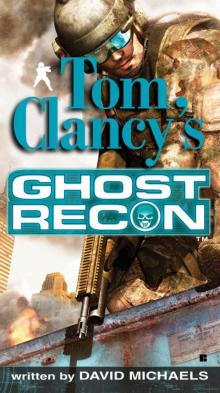 Ghost Recon gr-1
Ghost Recon gr-1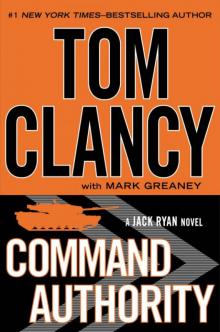 Command Authority jr-10
Command Authority jr-10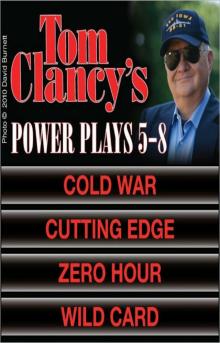 Tom Clancy's Power Plays 5 - 8
Tom Clancy's Power Plays 5 - 8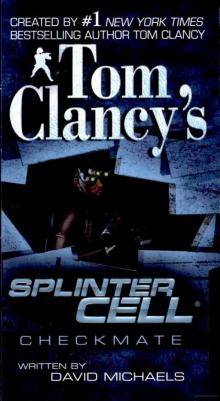 Checkmate sc-3
Checkmate sc-3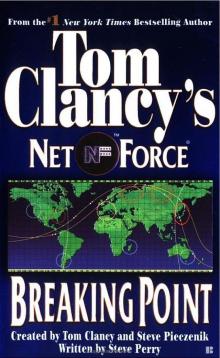 Breaking Point nf-4
Breaking Point nf-4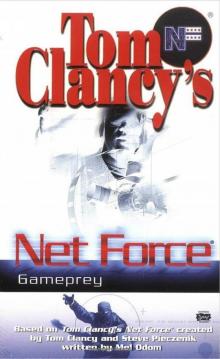 Gameprey nfe-11
Gameprey nfe-11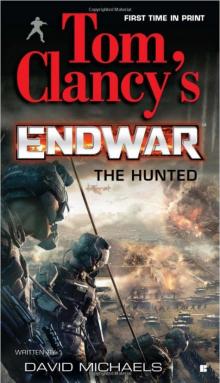 The Hunted e-2
The Hunted e-2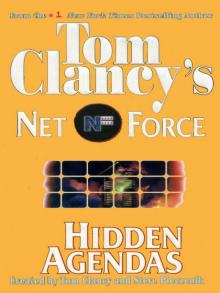 Hidden Agendas
Hidden Agendas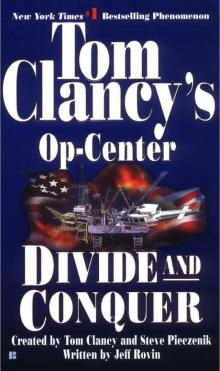 Divide and Conquer o-7
Divide and Conquer o-7